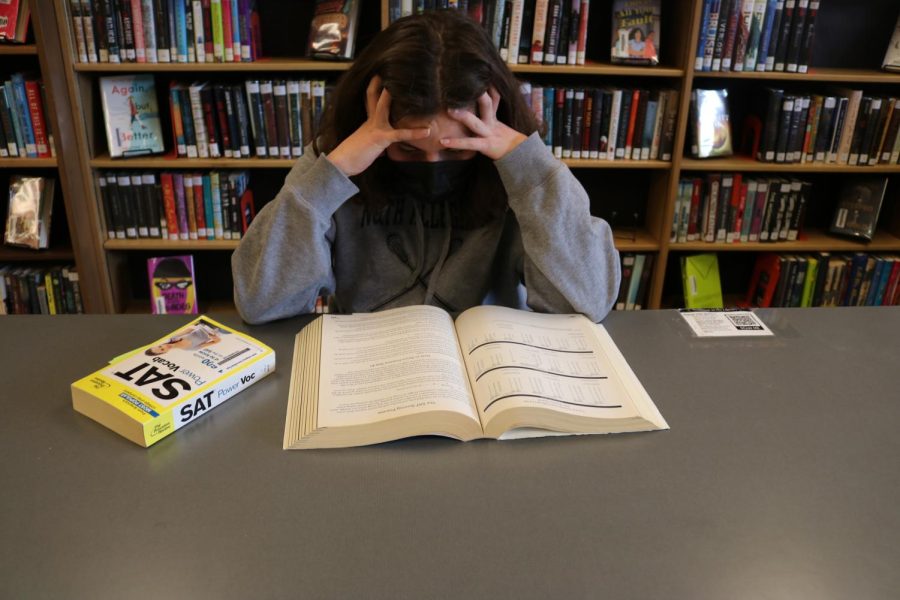Changes Coming to SAT
Sophomore Claire Fiedler studies for the SAT in the NAI Library.
February 22, 2022
The Scholastic Aptitude Test (SAT), which has remained largely unchanged since it was first introduced in 1926, is about to undergo significant changes to make it more relevant for modern times.
According to the College Board website, the SAT will be two hours long instead of the current three hours, so that students have more time to spend on each question. The questions centered around reading passages will have shorter passages moving forward, and students will be allowed to use calculators during the Math portion of the SAT. The wait time to receive scores will lower from weeks to just days.
Current sophomores and freshmen will be the first students to take the new SAT. Many colleges and universities require a certain score from the SAT for a candidate to be accepted as a student. High schoolers looking at colleges with these requirements have to prepare themselves for the test in order to receive a high score.
One of the tools used to prepare is the PSAT that can be taken as early as sophomore year. Current sophomores will have the unique opportunity to take the current SAT next year and then the new version in their senior year. The class of 2024 is the only class that will be able to compare the two tests. Some sophomores like Chandni Srinivas have already taken the PSAT.
When asked if she would prefer the SAT to be virtual or on paper, Srinivas said, “Virtually because being at home might provide a less stressful environment.” The SAT is a source of stress for Srinivas and countless other students who have been through or are currently going through the process of preparing to take the test. The new virtual format could possibly ease some of the stress that has previously been a package deal with the SAT.
Sophomore Sabrina Malkin says, “I would prefer to take it virtually because almost everything is now done digitally.” Many colleges lifted the SAT score requirements for applications during 2021 because of the pandemic. Malkin’s thoughts draw attention to the fact that the changes being made to the SAT are an attempt to keep the test more relevant. The test has been around for almost a century, and going digital is trying to keep the SAT’s significance.
However, being the first grade of students to try out the new test isn’t all that appealing to some students either. Sophomore Wynn Musselman says, “I don’t like being the first to try it out. If anything goes wrong, I won’t have any information on how to fix the issue since I may be the first to encounter it.” For students like Musselman, taking the new SAT creates a different type of stress because of all the unknown things about it. The new test is exchanging one type of stress for another.
Other students feel indifferent to the changes being made to the SAT. Sophomore Isy George says, “Honestly it doesn’t matter either way. The content I think is the harder part…but at the end of the day, I don’t think it makes much of a difference to me.”
George is less concerned about the formatting of the test, and more focused on the content that will be on the test. Although there are some changes to the material, it is still the SAT and students still have to prepare for it.
At the end of the day, the SAT changing is likely going to alter standardized testing. Going digital and downsizing some of the material on the SAT will change how students approach preparing and taking the test. It could set a new precedent for how standardized tests are given in the future.












